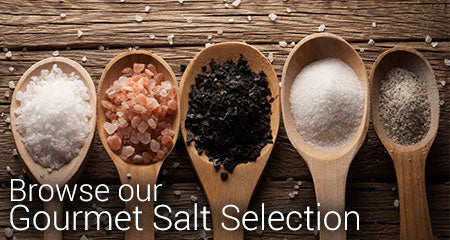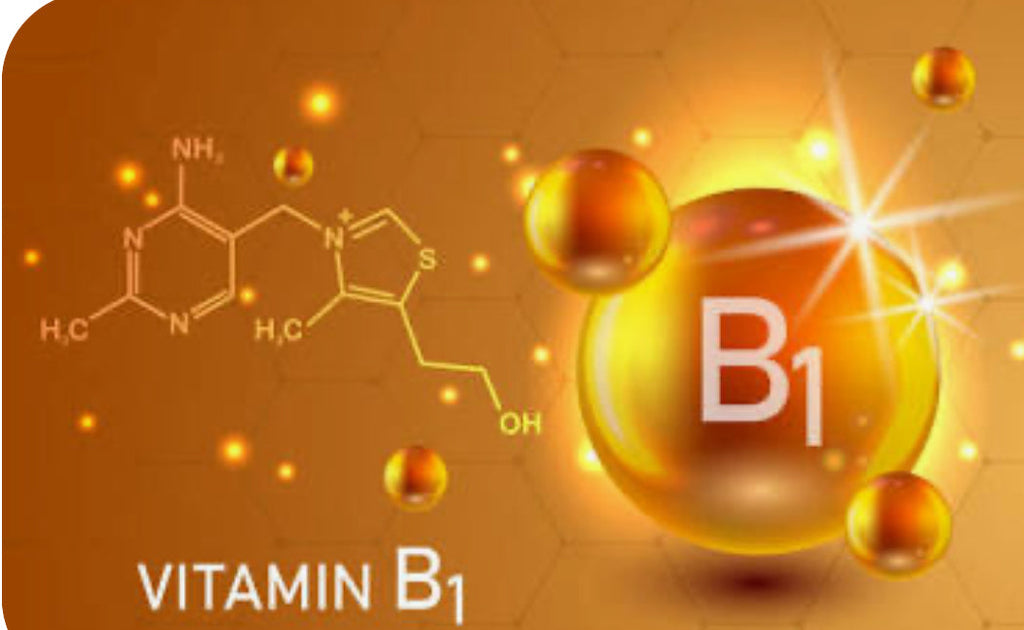Migraine & Severe Headaches - # HP-EVOO - Blog # 108

Happy Friday Everyone! Welcome back to another Friday blog. Today I want to talk about migraines and severe headaches. Did you know that 25.5% of women aged 18-44 experience severe migraines or headaches? Men in the same age group are around half that. Overall, around 15% of the population suffer from migraine headaches. Migraine headaches are also the second leading cause of debility in the U.S. - MIDAS disability increased from 22% in 2005 to 42.4% in 2018. "Neurological disorders affect 3.4 billion people, or 43.1% of the global population, making them the leading cause of disability-adjusted life years (DALYs) in 2021, with an 18.2% increase since 1990. The top three causes of DALYs in this category are stroke, neonatal encephalopathy and migraine." It is the number one disabler in women <50 years old. What is causing migraines and severe headaches and what can we do to alleviate the pain and loss of quality of life? Let's delve in.
There are several factors to consider when trying to address the root cause of severe headaches and migraines.
- Pain - the brain itself feels no pain. However, the meninges that cover the brain are packed with pain receptors and do not like to be stretched or contracted - and can generate pain. Osmotic pressure changes can generate pain - think dehydration - think lack of sodium and trace minerals. There are 3 layers of meninges covering the brain and spinal cord: Dura mater (outermost), Arachnoid mater (middle), Pia mater (innermost). The trigeminal nerve has innervating branches to all 3 meninges that often, collectively are referred to as the dura. "The researchers observed that stimulation of the pia mater and its nutrient vessels led to pain, localized mainly in the sensitive V1 territory. A territory which innervates the forehead, eye sockets, cornea, superior and anterior temporal regions, nasal bridge and nasal mucosa."
- Sodium levels - Interestingly, the frequency of migraine headaches is INVERSELY correlated with sodium intake. This can be tricky. Your brain is trying to maintain proper osmotic pressure. High sodium intake (as in highly processed foods) can cause a loss of water and constriction of micro vessels that can lead to increased pressure, while low sodium can cause water to flood the brain causing swelling.
- Trigeminal Nerve is the largest cranial nerve and comprises central and peripheral processes. Central processes descend in the brain stem into the spinal tract - terminating in the region forming he trigeminal nucleus caudalis that further form the trigeminothalamic tract, which extends into the deep higher brain centers to communicate with the hypothalamus. The peripheral processes constitute the three sensory branches - ophthalmic, maxillary and mandibular, of the trigeminal nerve. These three branches distribute to pain and temperature receptors to the face, forehead, eyelids, nose, pinna, tongue, teeth, cerebral blood vessels, dura mater, and in the posterior area of head and neck.
- Vertigo - Often, vertigo can accompany migraine headaches is associated with deficiencies in Copper, Zinc, Selenium, Magnesium, B12 and vitamin D3. Researchers noted that "painful trigeminal stimulation can induce an imbalance of the vestibular system in migraine patients and possibly explain their predisposition to vertigo."
- Connectivity changes - in the interconnectivity of the Pons and Hypothalamus - This is your relay center that communicates between the forebrain, cerebellum and spinal cord. It controls breathing and circadian rhythm. Did you realize the hypothalamus requires Chromium, Selenium, and vitamin C to function properly? Could this be a trace mineral/nutrient deficiency? "The study found that migraine patients had a higher inhibitory effective connectivity in the left pons, and from the right and left pons to the ipsilateral and contralateral hypothalamus, compared to controls. Additionally, migraine patients had a lower inhibitory effective connectivity from the left hypothalamus to the left pons, and a higher excitatory effective connectivity from the right pons to the left pons."
-
Inflammation appears to be paramount in migraine and headache sufferers. High oxidative stress, plastics, heavy metals, mycotoxin exposure, environmental toxins, artificial dyes and sweeteners can all trigger migraines. Inflammation requires high vitamin D3 status to help put out the fire.
- Plastics - Did you know that on autopsy they find that .5% of total brain weight is now plastic? WHAT?! That is the equivalent of an entire standard plastic spoon. Micro and nano-plastic bioaccumulation has increased 50% in the last 8 years. It appears to accumulate in the prefrontal cortex - which may be more vulnerable. Further, micro and nano-plastic shards are being found in our blood and the lining of our blood vessels, human testicles, placenta, lungs, liver, kidneys and other organs. This leads to infertility in females and a decline in sperm count in males. Micro and nano-plastics can invade cells and disrupt cellular processes, dragging along endocrine-disrupting chemicals like bisphenol and phthalates, heavy metals, flame retardants and PFAS (per and polyfluorinated substances) - forever chemicals. It has been estimated that we are consuming a credit card's worth of plastic each week! Holy moly! AND... there is no known way to remove it from your body. Sobering.
- Lack of Antioxidants -"Oxidative stress damages nucleic acids, proteins and lipids and potentially opens the mitochondrial permeability transition pore, which in turn can further stimulate ROS production, worsen energy failure and release proapoptotic factors such as cytochrome c into the cytoplasm." Elevated levels of ROS (reactive oxygen species) along with downregulated or low levels of antioxidants through the diet induce cellular damage to proteins and can lead to neuronal cell death.
- A leaky BBB (blood brain barrier) can contribute to inflammation in the brain.
- Infection can trigger an immune response that drives inflammation.
- Phthalates from scented products increase inflammation. Perfume, cologne, scented candles, air freshener, etc. Your nose offers direct access to the brain (due to anatomical connection) via the olfactory nerve and trigeminal nerve. Fragrances and scents can trigger a migraine through this pathway. What you put on your skin, shampoo, etc. plays a huge role as well.
- Energy metabolism - is the brain getting fuel? The brain is an energy hog - utilizing ~ 25% of body's fuel. The brain relies on glucose and ketones as fuel to produce ATP - but runs best on ketones. Most of us are only giving our brain glucose and never provide the other fuel because we never get ourselves into ketosis. Our brain is not able to perform optimally due to deficiency in ketones as fuel for our healthy cells. When we have insulin-resistance or T2D (type 2 diabetes) our brain is under stress and starving from lack of energy. Supplementing ketones is extremely effective. In fact, they knew 100 years ago that when you put a child with epilepsy on a ketogenic diet, their seizures went away. More recently, Dr. Dale Bredesen has been teaching professionals how to reverse Alzheimer's and dementia - literally changing the quality of life for individuals by applying a nutrient-dense ketogenic-leaning diet including EVOO and lifestyle interventions.
- Mitochondrial function - Mitochondria use oxygen to burn glucose or ketones (fat) to produce ATP. Many of us have damaged our mitochondria who are now less efficient at burning glucose - and likely unable to switch to burning fat to make ketones. Cells can't get the glucose inside to turn into ATP (energy). The brain begins to starve. Migraine sufferers are found to have about 20% less ATP in their brains than their normal counterparts. Mitochondria are damaged and are unable to produce the level of ATP required. May need to supplement CoQ-10.
- BBB (blood brain barrier) Dysfunction - much like the gut, membrane barriers can become dysfunctional or leaky - allowing pathogens, toxins and misfolded proteins to cross the barrier - "transient dysfunction of brain barriers before or during migraine attacks might facilitate the passage of migraine-inducing peptides into the central nervous system." Researchers have noted peptides crossing into the brain inducing a migraine headache. These normally require a transport across the BBB. Tight junctions, similar to the gut, are ATP-dependent to close tightly. Ketones enhance BBB function providing a preferred fuel for energy and ability to clear amyloid-β (Aβ) peptides from the brain.
- Pressure changes - barometric pressure changes in weather sometimes can trigger a migraine by causing fluctuations in the dura mater.
- Magnesium deficiency - symptoms include nausea, vomiting, constipation, poor energy, anxiety, muscle twitches, migraines/headaches, heart palpitations.
- B2 (riboflavin) deficiency - can't properly produce energy in cells - requires high dose B2 (400mg). B2 is water-soluble, cannot be synthesized by vertebrates and therefore MUST be consumed in the diet. B2 plays a huge role in "mitochondrial electron transport chain, β-oxidation of fatty acids, redox homeostasis, citric acid cycle, branched-chain amino acid catabolism, chromatin remodeling, DNA repair, protein folding and apoptosis."
- Hormonal imbalances - some women can have migraines associated with their menstrual cycle or even during perimenopause.
- Neurotransmitter imbalances - serotonin can often be low during a migraine. "In the brain, normal levels of endogenous serotonin (5-HT) prevent migraine headache...The neuroinflammatory response is increasingly recognized as a key event underpinning the pathophysiology of migraine, involving a complex neuro-glio-vascular interplay. Further, imbalances in acetylcholine - the primary neurotransmitter in the brain can also be found. Researchers noted that "endogenous acetylcholine contributes to migraine pathology mainly by activating meningeal mast cells while muscarinic receptors are involved in CGRP release from trigeminal ganglion and brainstem, without excluding the possible role of nicotinic cholinergic receptors."
- Oxygenation - are we getting good blood flow? Is there enough RBC (red blood cells) and hemoglobin to carry O2 into the tiny, microscopic blood vessels of the brain? Is the blood too thick - are you dehydrated? Exercise?
- Food sensitivities - tyramines, sulfites, gluten, dairy, eggs
- Allergens - food, pollen, dust, latex, etc.
- Excitotoxins - MSG, aspartame, environmental toxins, pesticides
- Microbiome/gut issues - bacterial overgrowth like SIBO (small intestinal bacterial overgrowth) or SIFO (small intestinal fungal overgrowth), constipation, digestive issues
Obviously, there is a lot at play here. So, what can we do to decrease and alleviate migraines and severe headaches.
- Remove Highly Processed Foods that can potentially cause a migraine - they are packed full of all the offenders - high fructose corn syrup (mitochondrial poison), processed sugar, inflammatory seed oils, preservatives, dyes, stabilizers, gums, table salt - straight sodium chloride - full of plastics, bleached and devoid of other crucial minerals.
- Remove Inflammatory Oils - change your oil!!! These damage the cell membranes that in the brain are 70% fat. These oils have a half-life of 680 days and can take up to 7 years after you stop ingesting them to rid them from the body.
- Get into Ketosis - eat healthy fat, protein and fiber. Remove highly processed foods, grains, sugars and high carbohydrate loads in order to switch to a fat-burning mode.
- Supplement ketones - take MCT oil, shot of EVOO, coconut oil, avocado oil, grassfed butter - these can all be added to a lovely organic coffee in the am.
- Eat an Organic Whole-Food Diet - full of fiber and phytonutrients that control inflammation, feed the microbiome, feed the mitochondria and provide vitamins and minerals. This includes wild caught fish, grassfed beef, pasture-raised chicken, cultured raw dairy, fermented products. Ask yourself, did God make this or is it made in a factory.
- Increase Quality Sea Salt - Baja Gold sea salt (90+minerals), Celtic sea salt (82 minerals), Pink Himalayan sea salt-not from China- (84 minerals), Hawaiian Red Clay sea salt (80 minerals), - these contain trace minerals in the exact proportion required by the human body. Could a deficiency in trace minerals be contributing to migraines? When you remove highly processed foods, you remove most of the sodium chloride from your diet. You need to put good salt on your food.
- Get Quality Sleep - when we sleep our brain can get rid of toxins, malformed proteins, viruses and microbes through the glymphatic cleaning system.
- Control Chronic Stress - keeping cortisol in check - deep breathing, meditation, humming, singing, yoga, grounding...habit stack!
- Optimize Vitamin D3 - get levels up to optimal 70-100 ng/mL. This is a powerful anti-inflammatory and balances the immune system. This is crucial to get inflammation under control. Vitamin D also downregulates the CGRP (calcitonin gene related peptide) that is typically elevated with migraine - through modulating the immune system and mast-cell activation. In diabetic neuropathy, capsaicin normalized levels of CGRP and function of sensory nerves.
- B vitamins - most of us are deficient and don't have a healthy microbiome to produce B vitamins. These gut microbes also consume B vitamins and will eat them before you get them. B1 (thiamine) is highly important and is the quarterback of your team. B2 is crucial as well. High dose B2 is required to help mitochondria produce energy - recommendation is to supplement up to 400mg. Further, nearly half of the population have DNA snips (ex: MTHFR) that prevent proper methylation (activation) of our B vitamins. There is an inverse relationship between the intake of vitamin B6 and B9 and severe headache or migraine. Taking high dose methylated B vitamins can prevent migraines. (vitamin B6 intake ≥ 2.39 mg/day and folate intake ≥ 502.01 µg/day)
- Omega 3s - particularly DHA and EPA are "crucial for the nervous system, mediate various physiological functions. Omega-3 PUFAs offer cardiovascular, neurological, and psychiatric benefits due to their potent anti-inflammatory, anti-nociceptive, antioxidant, and neuromodulatory properties, which modulate neuroinflammation, neurogenic inflammation, pain transmission, enhance mitochondrial stability, and mood regulation." High dose DHA from Alaskan Cod Liver Oil is an excellent source. Eating fatty fish "SMASH" fish - salmon, mackerel, anchovy, sardines, herring. If you consume these at least 3 days per week, you may not need to supplement - but you must STOP consuming the inflammatory oils.
-
HP-EVOO (high polyphenol extra virgin olive oil) - loaded with polyphenols, phytonutrients, vitamins, oleic acid:
- feeds the microbiome
- feeds mitochondria
- inhibits growth and replication of pathogens
- provides ketones for fuel
- antioxidant and anti-inflammatory properties
- immunomodulation - helps normalize immune response
- improves cellular membrane function and fluidity
- relieves pain - oleocanthal, oleuropein have pain-relieving properties above par with ibuprofen without negative side effects
- stabilizes blood sugar - enhances uptake of glucose
- enhances absorption of nutrients
- contains some omega 3s.
- heals/repairs BBB (blood brain barrier)
So, until next time my friends…Drink, Drizzle, Digest HP-EVOO at least 4T raw daily, - use more for cooking and drizzling/pouring onto your food - eat the rainbow of organic or wild-sourced or organic veggies (7-9 C) and low-glycemic fruits (to get the rainbow of gut microbes!) - eat wild-caught, pasture-raised, grass-fed - get plenty of sunshine - supplement magnesium, zinc, vitamin D3 + K2 - get your trace minerals and electrolytes with good sea salt - Celtic is hand-harvested and Himalayan was formed before plastics - eat foods high in lutein - drink your body weight in oz of water - get a good pre/probiotic - consume digestible and indigestible fiber for your gut microbes - adaptogens (such as mushrooms) and methylation donors (kale, beets, spinach, cruciferous, lion’s mane…), marjoram, rosemary, oregano, parsley and other herbs to detox, enhance overall health and reverse aging and disease - exercise your body and mind - add a few minutes of mindful meditation to your day to combat stress - take a hot Epsom salt bath and follow with a cold shower/cold plunge - practice “earthing” as an anti-inflammatory - remove EMF (electromagnetic frequency) devices and blue light - use IR (infrared) from incandescent lighting, non-toxic candle or light a fire to enhance sleep and...turn off the light!! #HP-EVOO
This blog is intended for informational purposes only. Discuss strategies with your Healthcare Practitioner.






